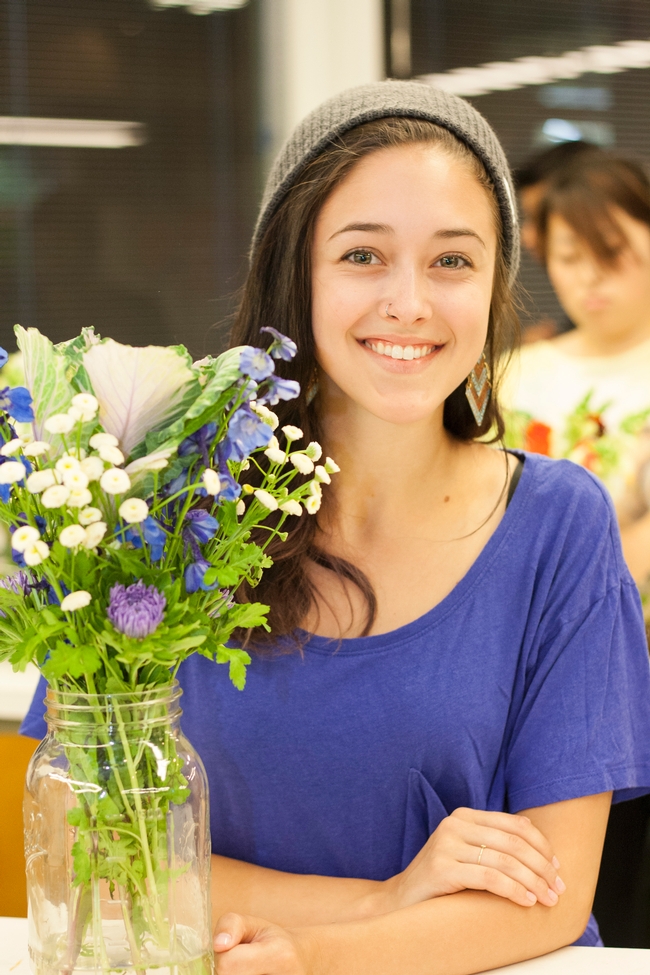Posts Tagged: floriculture
Bohart Bugs Grab Interest of Fairgoers
Bugs from the Bohart Museum of Entomology, UC Davis, grabbed the interest of fairgoers at the 144th annual Dixon May Fair, held May 9 through May...
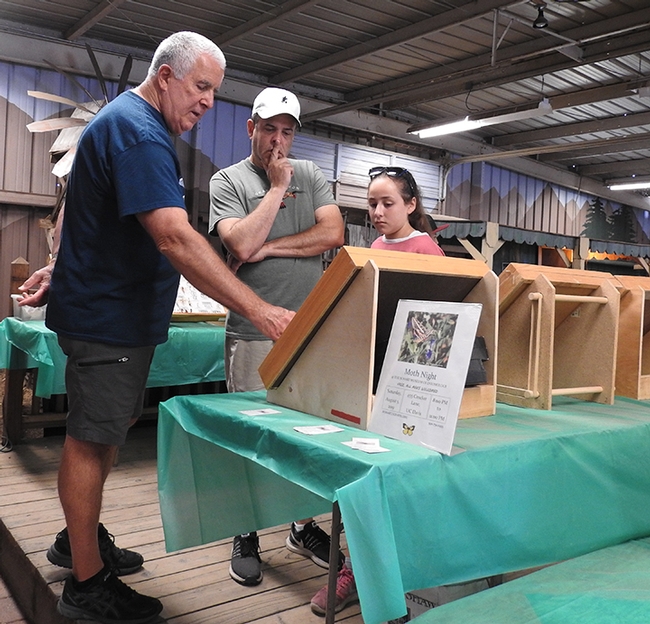
Entomologist Jeff Smith (left) shows insect displays from the Bohart Museum of Entomology to fairgoers last Saturday at the Dixon May Fair. (Photo by Kathy Keatley Garvey)
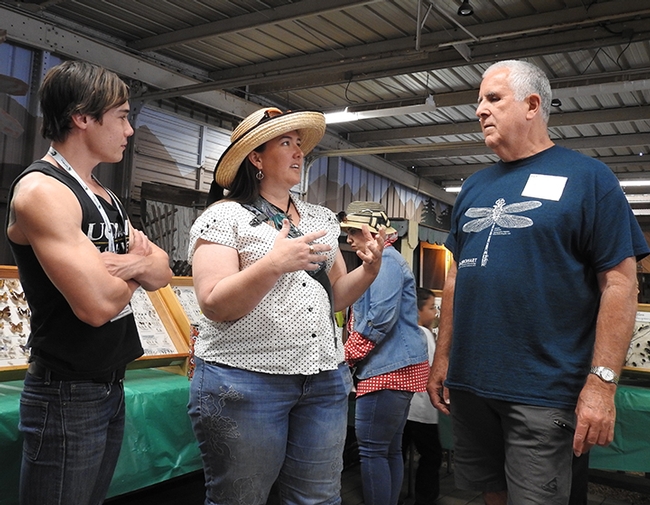
Entomologists Alex Dedon (left) and Jeff Smith of UC Davis engage with Carolyn Jones of Dixon, who served as chair of the 2019 Sacramento Orchid Show. (Photo by Kathy Keatley Garvey)
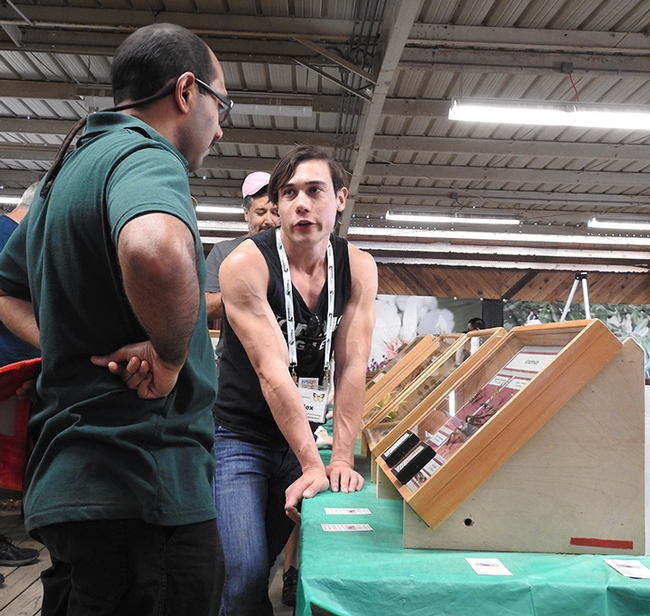
Forensic entomologist Alex Dedmon, a doctoral student at UC Davis, responds to a question from a fairgoer Saturday at the Dixon May Fair. (Photo by Kathy Keatley Garvey)
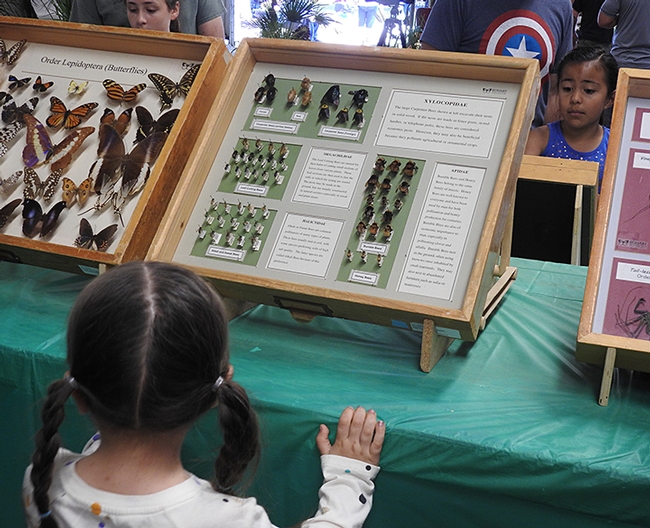
This fairgoer checked out the specimens of carpenter bees, honey bees, leafcutting bees and sweat bees from the Bohart Museum of Entomology at the Dixon May Fair. (Photo by Kathy Keatley Garvey)
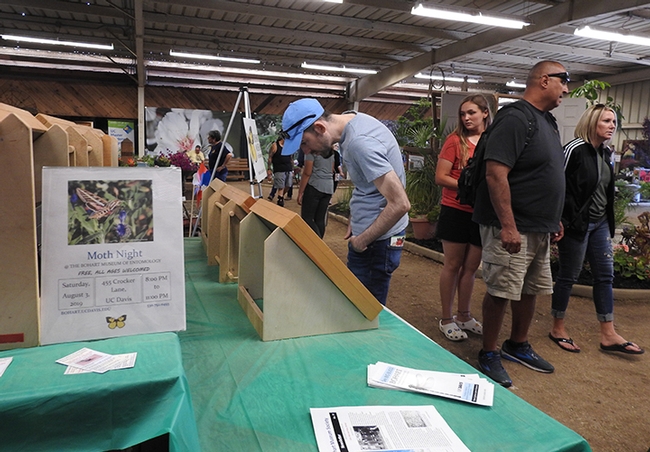
An insect display on Hymenotpera (bees and wasps) drew the interest of this fairgoer at the Dixon May Fair. (Photo by Kathy Keatley Garvey)
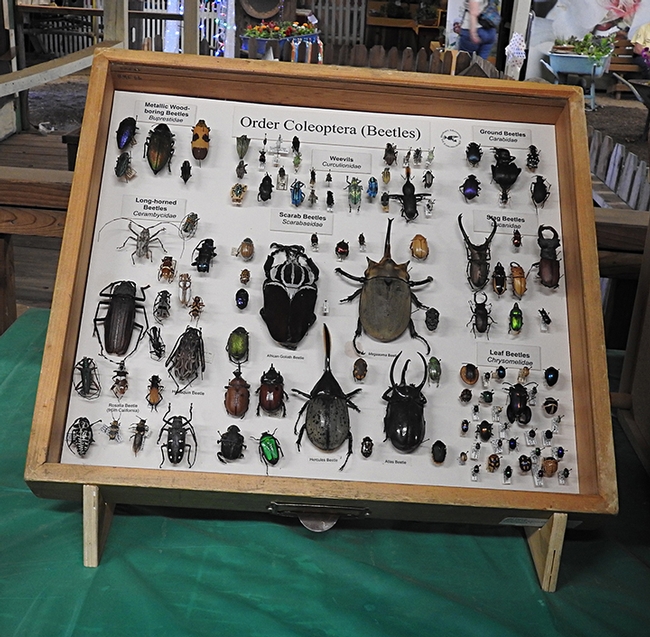
Specimens from the order Coleoptera (beetles) fascinated many fairgoers at the Dixon May Fair. (Photo by Kathy Keatley Garvey)
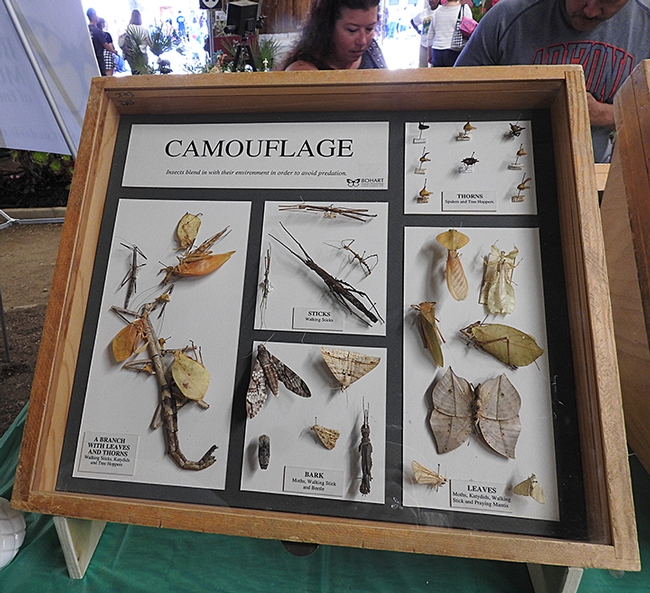
Camouflaged insects include stick insects that look like leaves. (Photo by Kathy Keatley Garvey)
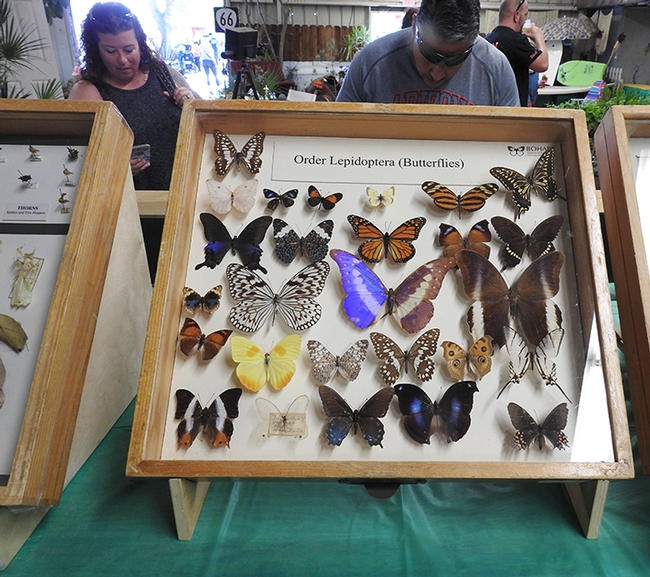
Butterfly specimens from the order Lepitoptera (butterflies and moths) brightened the Bohart Museum of Entomology display at the Dixon May Fair. (Photo by Kathy Keatley Garvey)
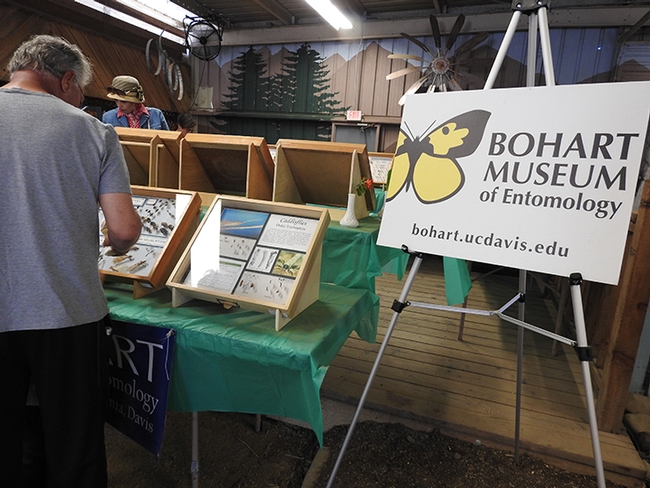
The Floriculture Building at the Dixon May Fair was more than flowers--it included specimens of pollinators and other insects from the Bohart Museum of Entomology. (Photo by Kathy Keatley Garvey)
Crowd-Pleasing Hamilton Will Be at Dixon May Fair
If you missed seeing Hamilton, not to worry. Hamilton will be at the 142nd annual Dixon May Fair on Friday, May 12. Not the crowd-pleasing Broadway...
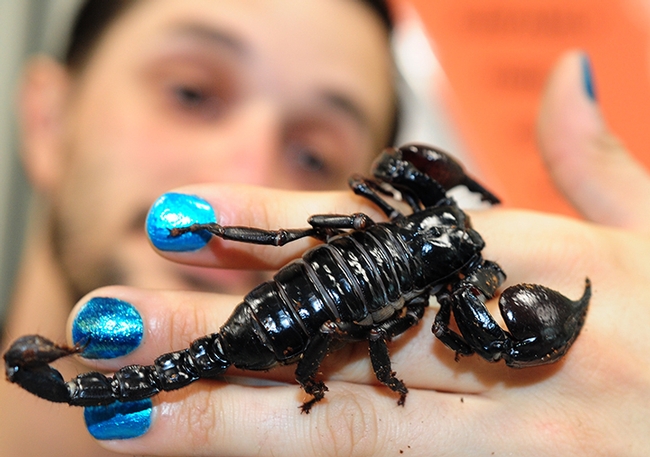
Meet Hamilton, a scorpion owned by Wade Spencer, an undergraduate entomology student at UC Davis and an associate of the Bohart Museum of Entomology. Spencer will display Hamilton and another scorpion named Celeste on Friday afternoon, May 12 in the Dixon May Fair's Floriculture Building. (Photo by Kathy Keatley Garvey)
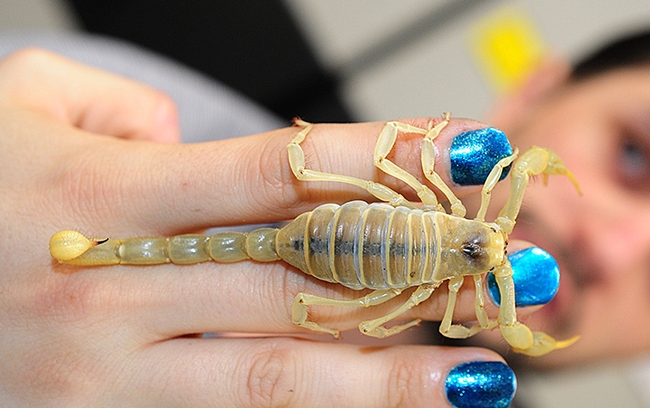
Meet Celeste, a scorpion owned by Wade Spencer, an undergraduate entomology student at UC Davis and an associate of the Bohart Museum of Entomology. Spencer will display Celeste and another scorpion named Hamilton on Friday afternoon, May 12 in the Dixon May Fair's Floriculture Building. (Photo by Kathy Keatley Garvey)
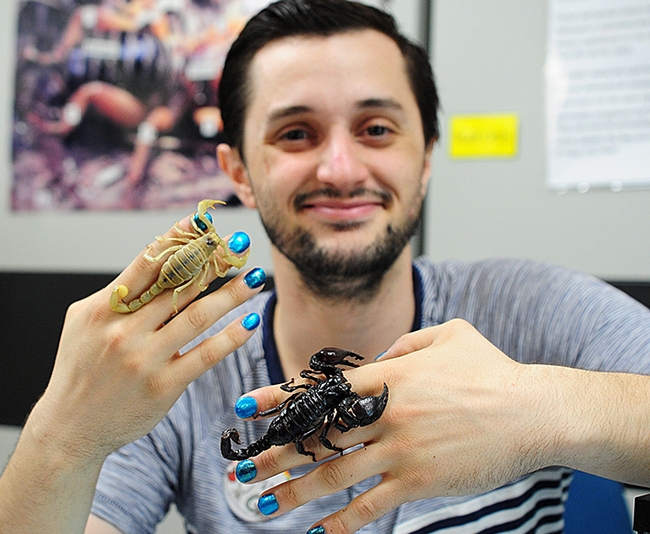
UC Davis entomology undergraduate student Wade Spencer holds his two scorpions, Celeste (left) and Hamilton. Fairgoers will be able to see and photograph them on Friday, but not hold them. Scorpions are venomous. (Photo by Kathy Keatley Garvey)
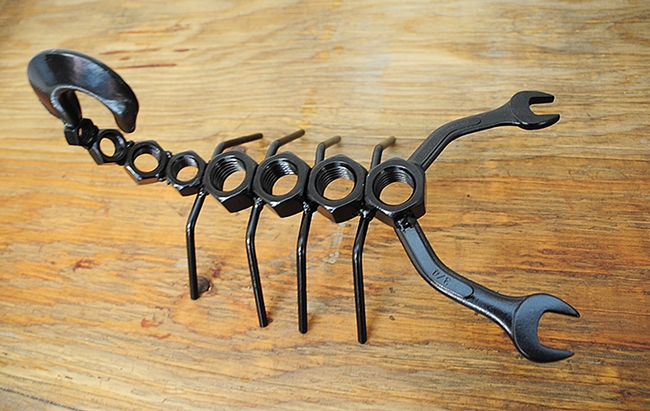
This scorpion sculpture, made of hex nuts, is the work of Roberto Ortiz of the Dixon FFA and is displayed in the Dixon May Fair's Youth Building. (Photo by Kathy Keatley Garvey)
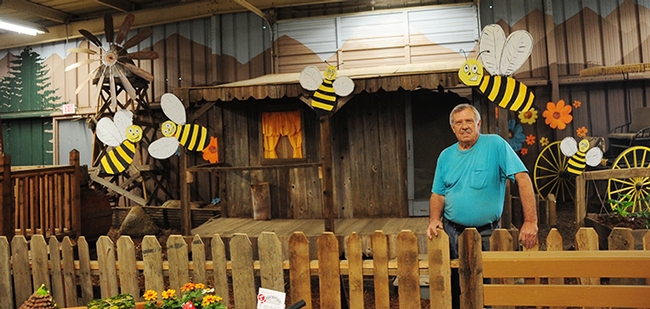
Dave Hutson, superintendent of the Dixon May Fair's Floriculture Building, stands in front of a bee-decorated exhibit. (Photo by Kathy Keatley Garvey)
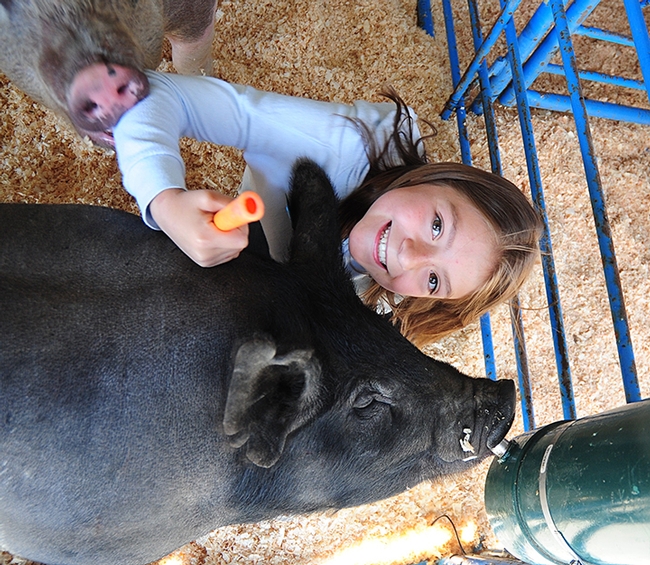
Meet Buggy, a 275-pound Berkshire hog raised by Sophia DeTomasi (shown), 10, of the Vaca Valley 4-H Club. Trying to photobomb this image is her sister Toni's hog named Bea. They share a pen in the Dixon May Fair Livestock Barn.(Photo by Kathy Keatley Garvey)
The art and science of Heiner's Flower Power
At the front of the class students pluck choice flowers from a line of buckets. They trim the stems and clip the leaves, bunch a few together, arrange and rearrange them. Anthony Neve, biting his lip, places the last snapdragon in his bouquet. A graduating senior, Neve found his way into the Environmental Horticulture and Urban Forestry major and into this class as a result of his family business, Neve Brothers Wholesale Cut Flowers, which he hopes to help continue after college.
“It’s everything I’m interested in,” he admits, maintaining his focus on the ebullient bouquet before him. He lowers his head and cranes his neck, studying the arrangement from several angles. “Every day’s something new to learn.”
The course is PLS6. But the students often hear about it from its title, “Flower Power.” Professor Heiner Lieth, UC Cooperative Extension specialist in the Department of Plant Sciences at UC Davis, bills Flower Power as a fun, easy way to introduce students to a broad swath of floriculture, an industry last year worth $4 billion in U.S. sales alone, with California leading the states.
Many students, like Brinton Parker, a junior English major minoring in textiles and clothing, are drawn to the class mainly by their own curiosity. “I wanted to learn more about flowers and to satisfy my science requirement,” she says, having perfected her flower arrangement, adding: “And I kill everything I touch.”
The class begins with flower biology and societal impacts, then leads into flower colors and bouquet compatibility and delves into cut flower lifespans, transportation issues, disease management and many other topics. Lieth forces the students to rethink GMOs, he says. He shows them how the world of flowers is completely dependent on genetics and he asks them if blemishes in organic flowers are actually important to the untrained eye. The idea is to switch up the routine and always “throw something at the students they cannot possibly expect.”
Today they are working on the art of flower arrangement. It’s a special workshop the teaching staff has put together with donated flowers from industry partners. The students are applying lessons on how to strategically assemble a bouquet that graduate teaching assistant Grace Lin demonstrated at the start of the class.
“It begins well be fore the class starts, with growing the flowers and getting the timing right,” says fellow TA Pete Cohen, explaining how some of the flowering plants used in the course were grown by him and interns in a campus greenhouse beginning months earlier. “Timing the flowers to bloom is a challenge. But in the department you learn all that.”
For Heiner Lieth, Flower Power is a teaching experiment that began three years ago. Inspired by Professor Dave Burger’s easy-going relationship with his students, Lieth wanted to provide an experience that catered towards what exactly his students wanted from a class. And to break old habits of lecture-style teaching, Lieth approached his new class as if he were offering the students a money-back guarantee. He calls it client-based teaching.
“They want a general purpose, nice and easy course, two units, general ed., science, writing, math,” undergraduate adviser Theresa Costa told Lieth when he was exploring ideas for the class. “They want it to fill their calendars.”
He came up with an introductory-level course and a title that would on its own seduce students into joining the course: “Flower Power: the Art and Science of the Beauty and Perfection of Flowers.” Quickly word-of-mouth spread and now, in the most recent quarter, the class was full within 48 hours. And, once he raised the cutoff to 190 students, it immediately filled again. “It’s extremely magnetic for students,” Lieth says.
The course is easy, he says, only in the sense that students will pass if they show up and do the work – though the workload is enough to keep them busy the entire term. And when this class finishes their flower arrangement workshop, they take their bouquets home, along with an intimate knowledge of an industry that few on campus have had the opportunity to sample.
See more Flower Power photos at the Department of Plant Sciences Facebook page here.

“It’s extremely magnetic for students,” Heiner Lieth says about Flower Power.
Saying It With Flowers
It's indeed an honor--a sweet one. Michael Parrella, professor and chair of the UC Davis Department of Entomology, was recently inducted into the...
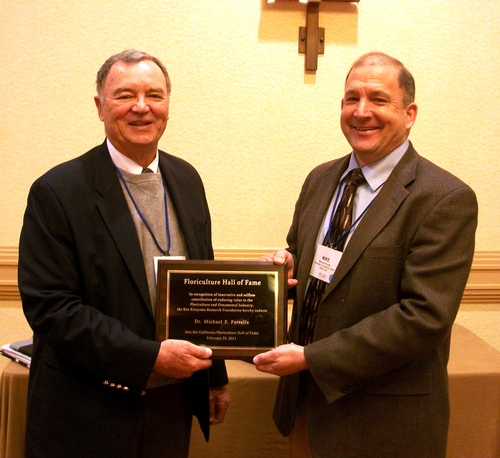
Floriculture Hall of Fame
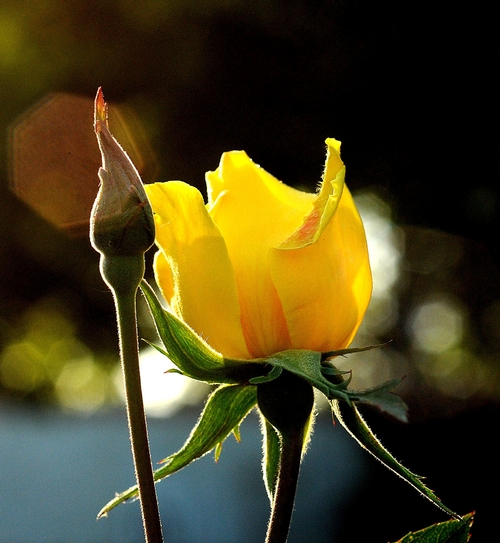
Yellow Rose
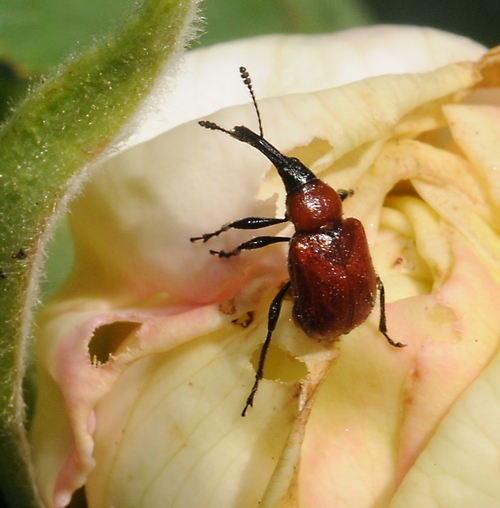
Rose Weevil
Saying it With Flowers--And Bugs
Michael Parrella knows his bugs--and flowers.Flowers?He was just elected a member of California Floriculture Hall of Fame for distinguished...

Tower of Jewels


